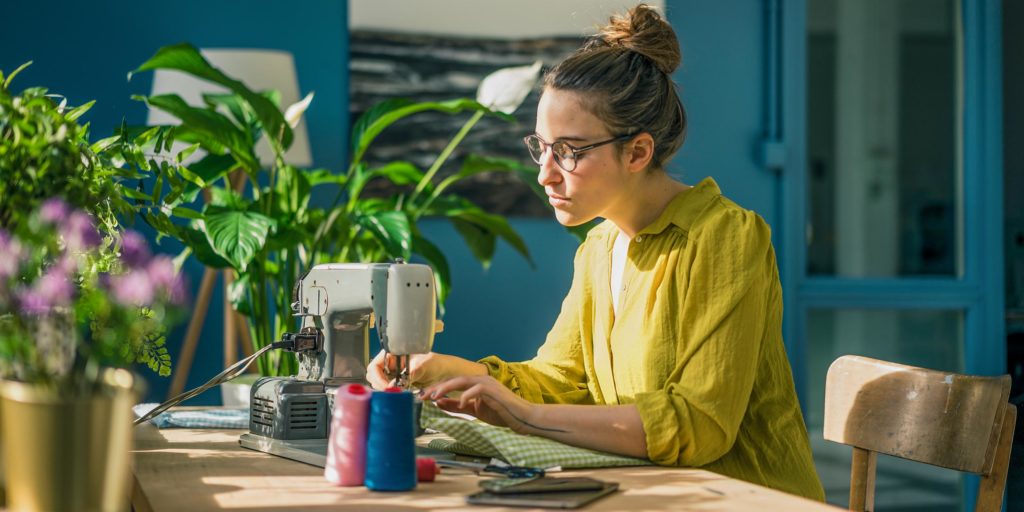Most models have bobbin winding mechanisms that load thread onto bobbins. The thread spool should fit smoothly into the bobbin. It should be wound evenly to avoid knots and tangles. If there’s something wrong, you should immediately contact a service center to have it fixed. To learn more about maintenance and how to troubleshoot, you can also consult the manual.
mechanisms that load thread onto bobbins
The choice of thread is critical to creating high-quality, attractive stitches. There are many thread options for sewing machines. Make sure to choose the right one for your fabric. Matching the fabric with the thread will make sewing easier and result in a better product. If you find that you’re having trouble threading a garment, consider investing in a new thread, as this will make troubleshooting the machine easier.
When threading a Bobbin, remember to always work from the front to the back and never let the thread loop about the needle. The thread should be pulled through a small slot in the foot. Once the thread is pulled through the slot, you can slide the excess thread to the back. The bobbin is the small spool white thread that causes many problems in sewing. To thread the Bobbin, ensure that the lever on the take-up lever is in the highest possible position.

Getting a new best embroidery machine for beginners machine? Here’s some helpful information. A sewing machine comes with a standard presser foot, which is a useful accessory for basic stitches. If you are planning to sew more complicated projects, you will need additional presser feet. A wide variety of styles of presser feet are available, and will help you achieve a wider range of sewing effects. This guide to sewing machine accessories gives you a complete overview of the presser foot.
Once you have selected the right feet for your machine, you will need to learn how thread your needle. There are two types, decorative and functional, of thread. Functional stitches feed the needle forward and decorative stitches feed backward. Decorative stitches are used for sewing projects with embellishments. Stretch stitches are those that move the needle from left to right and have a little give. Generally, you’ll want to stick with one or two of these types of stitches for the most effective results.
Once you have learned the basics of sewing, you will find the tension regulator on the machine. This metal part is located on the top left side of the sewing machine, and is used to maintain the proper tension while sewing. Tension regulators, which are different from traditional needles, use round discs to pinch the thread while it passes through the machine. These can help you to sew more accurately. A magnetic seam guide is a tool that regulates the tension of your thread. It can be used with or without another machine. The magnetic seam guide also includes a template that can be used to create common seam allowances.
If you’re new to sewing, you may want to purchase an instructional manual to get the most out of your machine. There may be differences between the manuals. Make sure you read both versions carefully to ensure that you’re doing everything right. Depending on the type and model of sewing you intend to do, the user’s handbook is essential. It will give you step-by-step instructions for how to use your sewing machine.
Once you have learned the basics of sewing, you will find the tension
Another essential part of your sewing machine is the thread guide. This mechanism helps keep the thread straight and untangled. It’s a simple mechanism and is positioned on the faceplate. The amount of fabric presser applied by the feed dog is also controlled by it. The higher the presser, the lighter the stitches will be. A sewing machine’s thread lever is another important component. It moves the thread up and down as you sew, feeding the needle with thread.
First, decide what type of sewing projects your new sewing machine will be used for. This will help you choose the right fabric and machine. This is especially important if you’re new to sewing. It may be difficult for a beginner to understand all of the options on a sew machine. The sewing machine is essential for sewing. A beginner’s guide for sewing machines is essential if you are interested in learning how to sew.
A sewing machine is incomplete without the needle. It is the component that threads the thread through the fabric and weaves the bobbin thread into the stitch. There are many sizes of needles, from 8 to 18. The numbers on the needles are smaller, so they are better suited for thicker fabrics. Some models have special needles that are made for leather or knit fabrics. You should also consider which needle is best suited for your particular sewing task.
